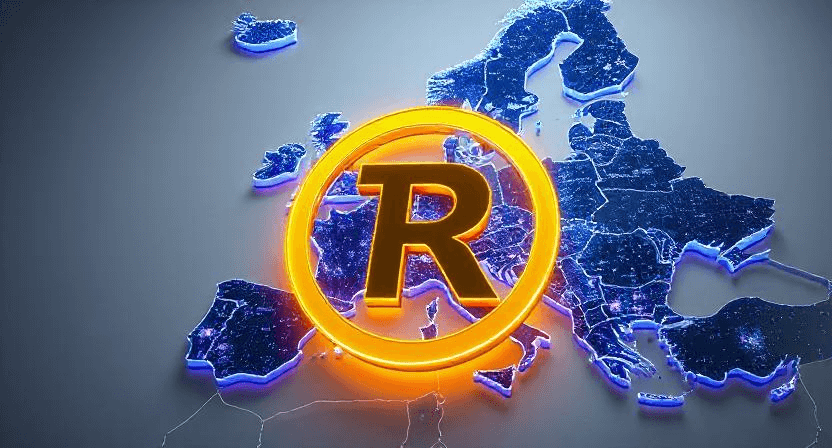Analysis of the Advantages and Disadvantages of the European Union Trade Mark (EUTM): Opportunities and Challenges in Cross-Border Protection
 The European Union Trade Mark (EUTM), formerly known as the Community Trade Mark (CTM), is a vital tool for businesses expanding into the European market. Since its implementation in 1996, the EUTM system has simplified trademark protection across the EU by offering a “single application, EU-wide protection” mechanism. However, the EUTM is not a one-size-fits-all solution, and companies must carefully weigh its pros and cons based on their specific needs. This article analyzes the EUTM from the perspectives of advantages, drawbacks, and suitability.
The European Union Trade Mark (EUTM), formerly known as the Community Trade Mark (CTM), is a vital tool for businesses expanding into the European market. Since its implementation in 1996, the EUTM system has simplified trademark protection across the EU by offering a “single application, EU-wide protection” mechanism. However, the EUTM is not a one-size-fits-all solution, and companies must carefully weigh its pros and cons based on their specific needs. This article analyzes the EUTM from the perspectives of advantages, drawbacks, and suitability.
I. Key Advantages of the EUTM
Broad Coverage and Cost Efficiency
The EUTM’s primary appeal lies in its extensive territorial coverage. By submitting a single application to the European Union Intellectual Property Office (EUIPO) and paying a basic fee of approximately €850 (for one class of goods/services), a trademark gains automatic protection in all 27 EU member states. Compared to filing separate national applications—which could cost over €20,000 in total—the EUTM significantly lowers the entry barrier for small and medium-sized enterprises (SMEs) seeking cross-border protection. For instance, a Spanish startup planning to enter the German and French markets could save at least 70% in application costs through the EUTM.
Centralized Management and Streamlined Procedures
With the EUTM, renewals, transfers, and modifications can be handled with a single submission to the EUIPO, avoiding repetitive procedures in multiple jurisdictions. Trademark infringement disputes can also be addressed at the EU level, reducing the need to initiate legal actions in each individual country and minimizing the risk of conflicting rulings.
Enhanced Brand Consistency
For businesses that prioritize a consistent brand image—such as those in the FMCG or tech sectors—the EUTM ensures uniform protection across the EU. This helps prevent brand fragmentation due to country-specific trademark issues. For example, Apple has successfully used the EUTM system to prevent third parties from imitating its trademark design in Poland.
II. Potential Drawbacks of the EUTM
“All or Nothing” Territorial Risk
Under the EUTM’s “unitary character” principle, if a trademark is opposed or invalidated in any one member state, the entire EU-wide protection is jeopardized. In 2020, for instance, a German company had its EUTM invalidated across the EU after it was challenged in Italy on the grounds of lack of distinctiveness, forcing the company to reapply for national trademarks in multiple countries.
Language and Examination Barriers
EUTM applications must be filed in one of EUIPO’s five official languages (English, French, German, Spanish, or Italian). The assessment is based on the perception of the average EU consumer, not just a local market. If a trademark has a descriptive meaning in any member state (e.g., “Sunny” being a common term in Spain), it may be rejected for lacking distinctiveness across the EU.
Post-Brexit Coverage Gap
Since 2021, the EUTM no longer covers the United Kingdom. Businesses must now file separately for UK trademark protection or rely on the “cloning” process to replicate existing rights. This change adds an extra financial and administrative burden for companies targeting both the EU and UK markets.
Strict Use Requirements
The EUTM must be “genuinely used” across the EU. Using the trademark in only a few member states (e.g., Germany and France) may not be sufficient to maintain rights, and it could be subject to cancellation for non-use. In 2018, a Nordic furniture company had part of its EUTM revoked for failing to demonstrate use in more than 10 member states over a five-year period.
III. Suitable Scenarios and Strategic Recommendations
Ideal Candidates for EUTM Registration
-
Startups aiming to access multiple EU markets
-
Multinational corporations seeking brand consistency
-
SMEs with limited budgets needing rapid trademark deployment
Scenarios Where Caution is Advised
-
Businesses targeting only 1–2 EU countries (costs may outweigh benefits)
-
Trademarks with potential negative meanings in certain languages
-
Companies with short-term operations not covering major EU economies
IV. Conclusion
The EUTM is a powerful instrument within the EU’s integrated market, offering efficiency and broad protection. However, its “one-size-fits-all” approach requires careful risk assessment. For many businesses, a combined strategy of “EUTM + supplemental national registrations” may balance efficiency with flexibility. Pre-application trademark searches and market analyses conducted by professionals are highly recommended to avoid invalidation due to regional issues. In a world of both globalization and regionalization, the EUTM remains a strategic gateway into Europe—yet its effective use depends on precise understanding of the rules.
Share this page
